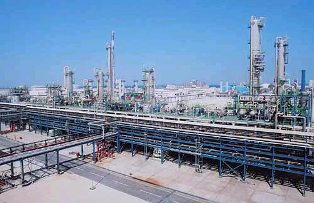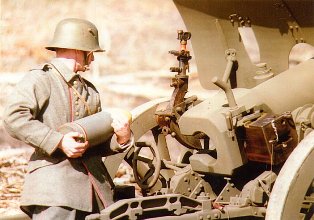The history of the development of electrochemical methods for the production of chlorine and sodium hydroxide. Part 2
The principle of the second electrochemical method for the production of chlorine and caustic soda in electrolysers with a mercury cathode reduces to the following. When the cell is operated on a mercury cathode, sodium metal is formed, forming sodium amalgam. At the anode, which usually produced seysgraphite, chlorine is released. In a separate apparatus, the amalgam is decomposed by water, which results in the formation of sodium hydroxide solution and hydrogen, and the released pure mercury is again used in the production process.
The idea of a mercury cathode method was put forward at the very beginning of the eighties of the 19th century. Russian scientists AP Lidov and VA Tikhomirov. They described the essence of their invention with the drawing of an electrolytic cell in the article "Some applications of dynamo-electric machines" published in the 27th issue of the journal Technika for 1883. However, they did not take advantage of the method they proposed, which, as it turned out, was destined to play an important practical Role in the industry of electrolytic chlorine.
Therefore, the beginning of the mercury method is derived from the patents of the American G. Kastner and Dr. K. Kelner, dating back to the early 90s of the XIX century. Both inventors took a number of patents. According to Fedot'ev, the most important was the invention of Kastner, patented in 1892 in England and other countries. Tripartent, two of which date back to 1892 and one by 1895, belong to Kelner. By 1895, Kastner's first major experiments on the implementation of the process at the plant in Aldborough (England).

The described method with mercury cathode, introduced in the late XIX - early XX century. At a number of factories, was named the method of Kastner-Kelner. The first inventor made a decisive contribution to the design of the electrolysis plant, the second solved the problem of decomposition of alkali amalgam.
There are also proposals of other inventors of the processes of obtaining chlorine and caustic soda by electrolysis of sodium and potassium chlorides. However, all of them to some extent duplicated the inventions of Kastner and Kelner or proved to be less effective.
On the European continent, the privileges of Kastner and Kelner were taken over by the Solvay society, which owns a number of important improvements in the process. Despite the fact that the inventions of Kastner and Kelner are at the heart of the process, original changes were introduced into it, which contributed to its wide dissemination. The principle of the installation, patented by the society "Solvay" (Russian privilege), is as follows. The cell is made in the form of a rectangular bath. The bottom of the bath can be horizontal or inclined, but at such an angle that it always remains covered with mercury.
Mercury is poured into the tub through a tube with a funnel. Alkaline amalgam is discharged through the lower tube from the opposite side and adjusted so that the amalgam is removed from the surface layer. A solution of sodium chloride, located above the mercury, is fed into the tub from the tube on the right, and through the tube from the opposite side of the bath it is withdrawn from it. As a result, a constant motion of the solution is achieved, which intensively washes the entire surface of the mercury and the anodes.
A remarkable feature of the described installation is the use of two layers of electrolyte with different concentrations. Mercury is directly in contact with the most concentrated layer, which has the greatest density. Above this layer is a layer, a poorer salt, in which the anodes are located. During operation, both layers are not mixed, since gases from mercury are not released. The lower dense layer of the salt solution is a sort of diaphragm. This solution is constantly in contact with mercury and does not mix with an "anode liquid" saturated with chlorine. Due to this, the denser layer is not saturated with chlorine. The concentration of both layers of the salt solution during the electrolysis is kept constant. The resulting chlorine is discharged through a pipe to the receiver, and the amalgam enters the apparatus in which it is processed into caustic soda, hydrogen and mercury.
The first electrolyzers with a mercury cathode were installed at the plant of the Deutsche Solvay Werke company in Osterningenburg (electric power of 1000 hp), founded in 1896-1897. By 1897, the commissioning of the plant in Belgium (1 thousand horsepower). According to data for 1903, the largest production of electrolytic chlorine existed in England at the Castner-Kellner Alkali G ° (4,000 hp) and in America at the Electrolytic C 0 (6,000 hp .) On the Niagara Falls. By the way Kellner worked in Austria-Hungary (1 thousand hp), which produced caustic soda and bleached lime. In Reinfelden there was at that time the production of caustic soda by a mercury method for processing it into metallic sodium according to the method of Kastner (1800 kW). The mercury method of producing chlorine and caustic soda was used at the beginning of the 20th century. And in Italy.
In Russia, electrolysis of common salt in installations with a mercury cathode was carried out in 1900 at the Lisichansk plant. At the Lyubimov, Solve and K 0 (station Pereezdnaya) baths were used with a mercury cathode (Kelner-Solve system). The plant had a capacity of 3 thousand kW of energy and produced about 5 thousand tons of caustic soda and 3,7 thousand tons of chlorine per year, which corresponded to 11 thousand tons of bleach.

The method with the bell originates from the idea of V. Bein, expressed by him in 1896, about the possibility of carrying out the process of obtaining chlorine and caustic alkali without separating the special diaphragm of the anodic and cathodic products of electrolysis. The inventor based his proposal on the principle of electrolysis in a U-shaped tube, one of whose knees the anode is lowered and the other the cathode. The products of electrolysis formed in the anodic and cathodic tube bends do not mix.
When current is passed in the cathode knee, caustic alkali and hydrogen are formed, which, without stirring up the underlying electrolyte, rises upward. In the other knee, chlorine is released. The alkaline solution of the cathode knee, due to its higher density than the electrolyte solution, drops and gradually fills the entire knee. As a result, the boundary separating the cathode and anode layers will approach the anode. If, however, the forced inflow to the anode of the fresh electrolyte is established and the alkaline solution is removed from the cathode at a rate ensuring the retention of the "neutral layer" in the former position, then the process can be continued continuously.
In 1898 the firm "Oesterreichischer Verein fur chemische und metallurgische Produktion" in Aussiga patented the method of electrolysis with a bell. The installation consisted of a bath with a bell, lowered into the electrolyte, made of non-conductive electric current material. In the upper part of the bell the anode was located, and outside it, a little higher, is the cathode. A fresh electrolyte was continuously fed to the anode during operation. At the same time, chlorine was taken from under the bell, and an alkaline solution was extracted from the cathode space. The method of electrolysis with a bell was used in the period under review on a very limited scale and was subsequently left as not economical.
Each of the described methods has its advantages and disadvantages. Thus, electrolysis with a diaphragm requires less capital investment in the organization of production and therefore allows the production of cheaper chlorine and caustic soda. The mercury cathode method provides very high purity caustic soda, but mercury losses pollute the environment. In both methods, 1.12 tons of sodium hydroxide per 1 ton of chlorine.
The described electrochemical methods arose under the influence of a large demand for caustic soda of the rapidly developing chemical industry. Chlorine was initially considered a by-product.
The growth of chlorine production was greatly influenced by the development in the early 20th century. Ways of liquefying chlorine and storing it. It was this circumstance that created the technical prerequisites for the use of large amounts of liquid chlorine in Germany in the First World War as a suffocating substance. Germany, which launched the gas war, had a powerful chlorine industry, its plants were equipped with a lot of large electrolytic chlorine plants.

In 1917, the Russian chemical industry had twelve chlorine shops, of which seven produced chlorine by a new electrolytic method and five - chemical (from hydrochloric acid).
By the end of the 20-ies the production of chlorine in the world reached a huge figure - 370 thousand tons.
Shukhardin S. "Technology in its historical development"


Comments
When commenting on, remember that the content and tone of your message can hurt the feelings of real people, show respect and tolerance to your interlocutors even if you do not share their opinion, your behavior in the conditions of freedom of expression and anonymity provided by the Internet, changes Not only virtual, but also the real world. All comments are hidden from the index, spam is controlled.